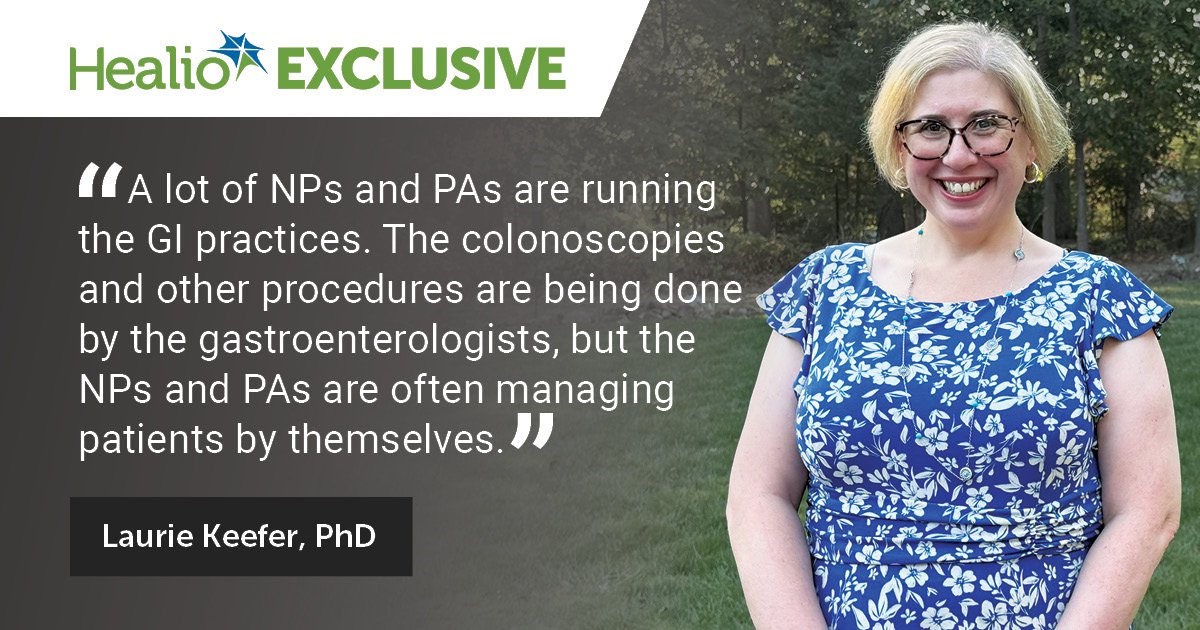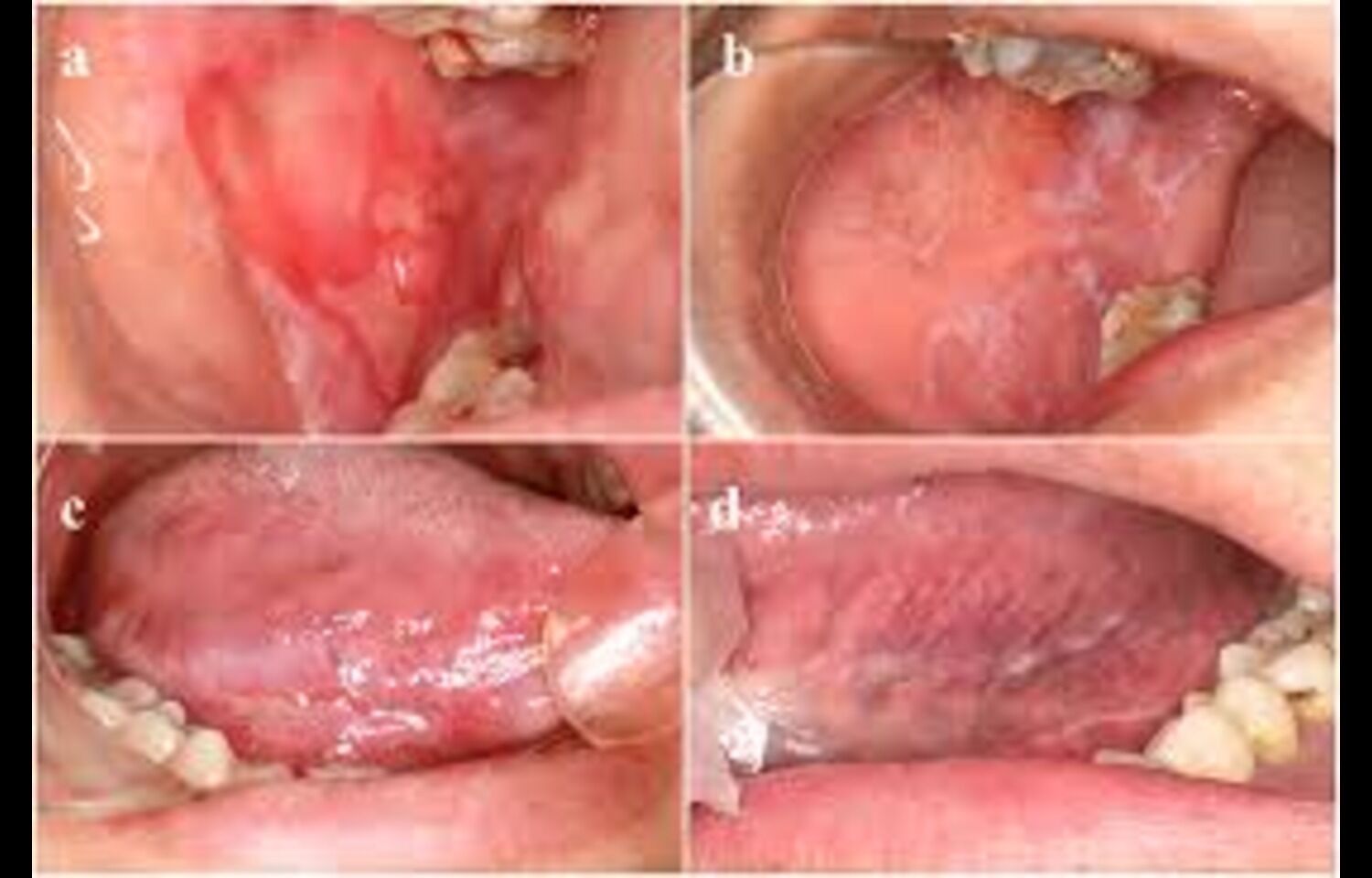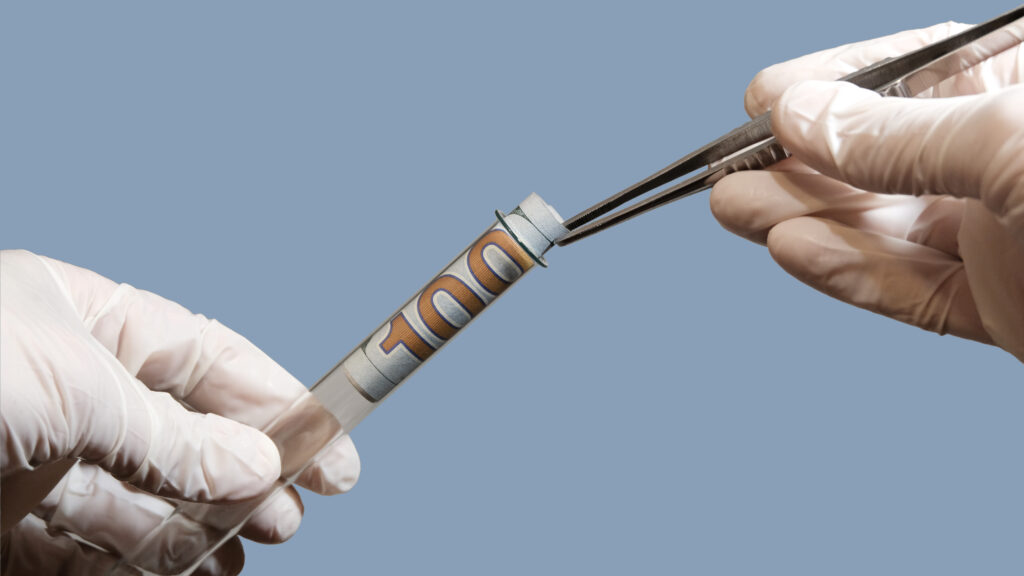October 08, 2025
8 min read
Key takeaways:
- Survey results show 60% of advanced practice registered nurses and physician assistants experienced burnout during their career.
- More than 25% reported currently experiencing burnout.
Increased reliance on advanced practice providers has been invaluable in ensuring continuity of care, improving efficiency and reducing physician burnout in busy gastroenterology practices.
However, while this ancillary support — which includes nurse practitioners and physician assistants — may have successfully bridged certain care gaps amid projected physician shortages, the problem of burnout appears to have been redistributed rather than eliminated.

Results of a survey published in the Journal of the American Association of Nurse Practitioners showed that 60% of advanced practice registered nurses and physician assistants had experienced burnout at some point in their career. More than a quarter were currently experiencing burnout.
Given the importance of compassion and empathy in patient care, the prospect of ongoing burnout among health care providers is particularly alarming.
“Patients can be difficult to love,” Laurie Keefer, PhD, a clinical health psychologist and professor of medicine, psychiatry and biomedical sciences at Icahn School of Medicine at Mount Sinai, told Healio. “However, part of the nursing profession is having empathy for people in their time of need, even if they’re not that likeable or behaving the way they should. Key symptoms of burnout are cynicism and loss of compassion, which are obviously going to affect patient care.”
Bridging care gaps
With physician shortages projected in several areas of medicine, practices have increasingly turned to advanced practice providers (APPs) to manage a growing patient population. According to Sarah Enslin, PA-C, a physician assistant in gastroenterology at University of Rochester Medical Center, this seems to be particularly true in gastroenterology.
“There has been a shift in several medicine subspecialties, but it’s really been significant with GI over the past 10 to 15 years,” Enslin told Healio. “Part of that is because we have an aging population with complex medical conditions that increase over the age of 65.”
In addition to the increased demand for gastroenterology services, there is a dwindling supply of GI clinicians, with many nearing retirement age.
“We don’t have as many fellows coming through to replace the number of physicians, and so we are left with this care gap,” Enslin said. “We’re seeing APPs really stepping in to help bridge that gap as providers.”
According to Rajesh N. Keswani, MD, MS, associate professor of gastroenterology and hepatology at Northwestern University Feinberg School of Medicine and director of endoscopy at Northwestern Memorial Hospital, burnout is not unique to gastroenterologists — or physicians in general.

Rajesh N. Keswani
“It’s pervasive throughout health care,” he said.
Though burnout rates within gastroenterology are not the highest among medical specialties, they are consistently elevated, Keswani said, and are largely driven by an expanding electronic health record burden, increasingly complex procedures in sicker patients and a continuously growing procedure volume.
Given the procedural burden placed on physicians, administrative tasks and other daily responsibilities in GI practices may increasingly fall to APPs, Keefer said.
“A lot of NPs and PAs are running the GI practices,” she said. “The colonoscopies and other procedures are being done by the gastroenterologists, but the NPs and PAs are often managing patients by themselves.”
Enslin said the nature of these expanded responsibilities for APPs — and the potential for burnout — often depends on a practice’s organizational structure. For example, if there is a high administrative burden or a lack of a dedicated prior authorization team, APPs often find themselves tasked with these duties.
Enslin noted that although administrative work might seem more conducive to burnout than providing top-of-license care, burnout can also arise from too much autonomy and responsibility.
“When we look at trends of burnout for APPs in general, we see that those with the autonomy to practice at the top of their license tend to be more professionally fulfilled, which is protective of burnout,” she said. “However, I think the opposite is true, too. Sometimes, when you have that autonomy and that high patient load, that can also be a heavy burden. A lot of work happens outside clinic visits — following up on results, communicating with patients. I think it burnout can occur for both reasons.”
‘The buck stops with the health care provider’
Burnout can occur at all stages of an APP’s career, Keefer said, although often for different reasons at each stage.
“Early-career burnout often occurs because there’s too much volume and too much work, while mid-career burnout is probably common when people don’t feel like they’re growing or developing — they’re just stuck,” she said. “Then you have late-career burnout, which is what happens when you’ve given up on trying to change the institution or the field. You just have this mindset where you want to get your retirement and go.”
Enslin said much of the literature suggests that mid-to late-career APPs are often hit the hardest by burnout.
“I think that happens because of heavy workloads, and also because of feeling undervalued,” she said. “However, we know that other factors can influence it, like lack of autonomy or a chaotic work environment, or not having the administrative support you need to efficiently care for patients.”
Keefer emphasized that essential components of workplace fulfillment — and protection against burnout — are autonomy, competency and connectedness.
She added that burnout in medicine is different than in other professions because in a medical environment, someone will always shoulder the burden and absorb the burnout. If a medical practice cuts administrative staff, technology or other costly areas, these duties will simply shift to the provider.
“Medicine is unlike any other field in that, at the end of the day, the buck stops with the health care provider who is responsible for the patient,” she said. “If the practice keeps cutting the front desk or billing personnel or administrative support, the providers just keep taking on more and more. No other profession is like that.”
Keswani said the consequences of burnout — whether among physicians or APPs — are potentially dire for patient care and provider well-being.
“We may become inattentive and miss important diagnoses — that’s on a day-to-day level,” he said. “On a career level, burnout is associated with substance abuse, premature retirement and even increased suicide rates. This robs our profession of highly trained providers.”
What role could AI play?
Keswani believes reducing the EHR burden is essential to alleviating burnout at a practice level. The prospect of using AI to mitigate this burden has generated excitement across all medical specialties, he noted.
“Too often, our burgeoning documentation requirements are related to billing rather than patient care,” Keswani said. “I think people are most excited about how AI can reduce burnout by improving the efficiency of work. AI is already automating documentation in some practices and may soon be routinely used to summarize the volumes of records that make up a patient’s history.”
Another example of AI aiding in burnout reduction is through its “computer vision” in endoscopic procedures, he added, which has the potential to minimize the consequences of fatigue or burnout for physicians and could decrease burnout in the practice overall.
Keefer also expressed interest in AI’s potential for reducing burnout related to administrative tasks.
“There are a lot of AI initiatives now to address systemic institutional burnout in terms paperwork, constant messages with patients and other administrative tasks that stop providers from practicing at the top of their license,” she said. “If AI were able to truly offload that, would that be a solution for burnout right now?”
Keefer highlighted a new feature of her institution’s EHR software that uses AI to draft replies to patient messages. It helps simplify her administrative work, but it does have flaws.
“It will draft a reply to your patient on your behalf, and then you can just hit send or you can edit it — that’s amazing,” she said. “However, it doesn’t sound anything like me. So already, it’s distancing me from my patient interaction.”
Keefer added that for APPs, maintaining a strong patient-provider relationship is particularly important for fostering respect.
“Adding further distance in this relationship doesn’t necessarily help with the respect,” she said. “One problem from the patient side is that many of them feel disconnected, and they don’t respect the nurse practitioner. They see it as one more person telling them what to do, and they treat these interactions more as though they are a customer service exchange.”
Enslin echoed this sentiment, noting that although AI has potential to alleviate certain aspects of burnout for APPs, this approach is truly “in its infancy.”
“As AI continues to develop, it will be interesting to see how it might be implemented,” Enslin said. “The question is going to be how to do this in a way that is not going to directly affect relationships with patients but actually helps with workflow optimization.”
Burnout must be addressed on ‘systemic level’
Keefer emphasized that efforts to identify and address burnout should not simply focus on improving efficiency. There is an ethical component that should also be considered.
“Part of the Hippocratic Oath is to take care of yourself so that you can take care of others,” she said. “I always like to remind my medical students that they have an obligation to themselves, but they also have an obligation to identify professionals around them who may be struggling.”
Enslin said providing APPs ongoing training and education also helps combat burnout by instilling confidence.
“We need to be able to provide continuing education to APPs, particularly those who don’t have a very strong GI foundation,” she said. “It’s important to get them up to speed so that they feel like confident providers who are part of the team.”
Investing in an APP’s career growth and professional development could yield higher workplace satisfaction, which in turn better serves the practice and its patients, Enslin said.
“Having an APP presence within the leadership team is also really important,” she added. “There was a good study done recently, which found that practices where APPs report to other APPs have increased retention and decreased burnout.”
Keefer added that physicians can also help APPs by signaling respect and support for their decisions during patient interactions.
“So many times, I hear patients say, ‘Well, the nurse practitioner told me to start this medication, but I want to hear from the doctor,’” she said. “I think doctors need to do a better job of making it clear that their NP is a true extension of them, and that they’re an authority on these matters.”
Ultimately, Keswani said burnout likely will only be meaningfully alleviated when institutions commit to addressing it on a systemic level.
“I get frustrated when I see yet another study quantifying burnout rates,” he said. “First, we need to acknowledge that our medical institutions — hospitals, medical groups and gastroenterology associations — need to prioritize provider well-being.”
Keefer noted that although wellness advice is valuable, practices should take care to avoid placing the burden on APPs to manage their own burnout.
“We keep telling individuals that they need to do more meditation and connection, set boundaries, time-manage and write their notes better, faster and cheaper,” she said. “We put a lot on the individual, but I think burnout is enough of a crisis that we can’t look at it as something the individual is or is not doing.”
Keefer emphasized that creating a sense of community and teamwork in practices is essential to reducing burnout for everyone.
“Community is a great buffer against burnout and stress,” she said. “Fostering that sense of community in various ways — through shared work opportunities, case conferences, journal clubs and brown-bag lunch lectures — reinforces the idea that we’re all in this together.”
For more information:
Sarah Enslin, PA-C, can be reached at sarah_enslin@urmc.rochester.edu.
Laurie Keefer, PhD, can be reached at laurie.keefer@mssm.edu.
Rajesh N. Keswani, MD, MS, can be reached at rkeswani@nm.org.








